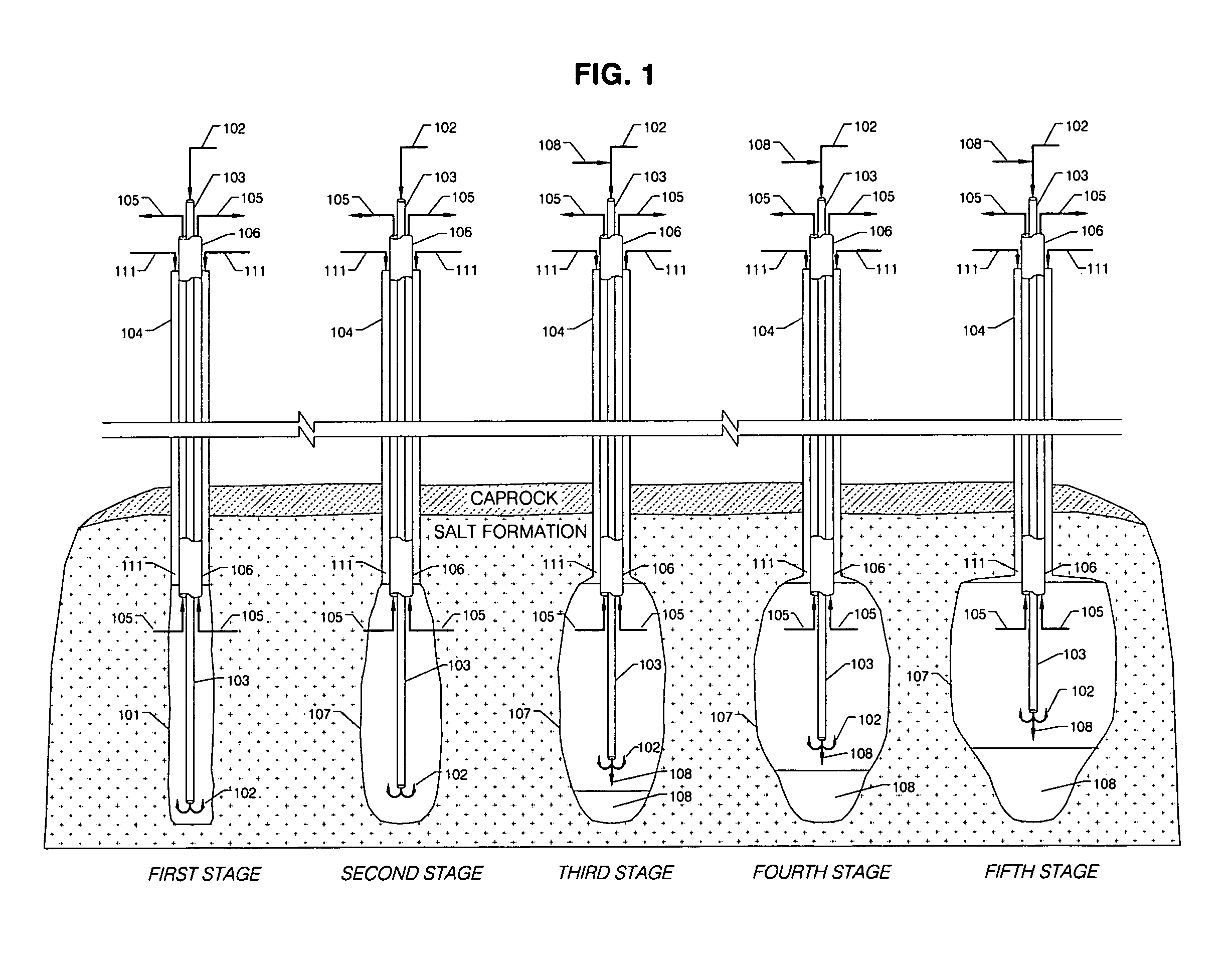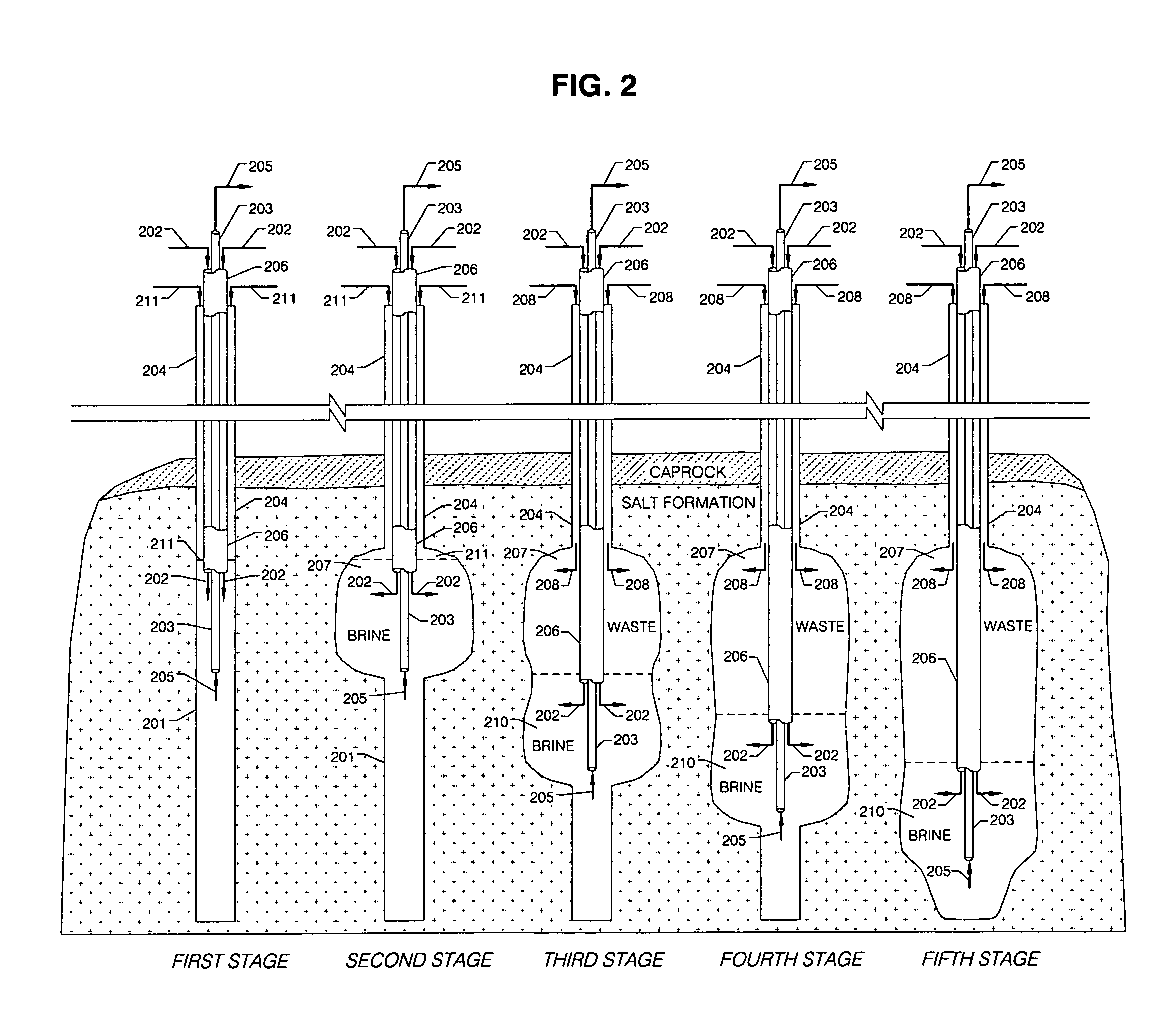Simultaneous development of underground caverns and deposition of materials
a cavern and material technology, applied in the direction of coal gasification, borehole/well accessories, transportation and packaging, etc., can solve the problem that none of them addresses the dual task, and achieve the effect of reducing capital expenditures and operating costs and minimal impact on the environmen
- Summary
- Abstract
- Description
- Claims
- Application Information
AI Technical Summary
Benefits of technology
Problems solved by technology
Method used
Image
Examples
Embodiment Construction
[0018]In FIG. 1 the method of this invention is illustrated in time sequence fashion with reference to the creation and development of a subterranean salt cavern and the simultaneous disposal of a heavier-than-brine solid waste. Referring to FIG. 1, a well 101 is first drilled into a naturally occurring salt formation located, typically, between about 500 and 3,000 feet below the surface of the earth. The initial drilling of the well is depicted in the First Stage diagram of FIG. 1, where well 101 is shown equipped with casing 104, which contains hanging mining pipe strings. Seawater 102 is injected through pipe 103, set inside casing 104 as part of the hanging pipe strings, and used to leach the salt in the salt formation. Pipe 103 is preferably made of steel, but it may also be made of other alloys, fiberglass or other materials. Since salt tends to dissolve in water up to 26% by weight, the leaching of the salt results in the extraction of brine 105, which exits through brine pip...
PUM
 Login to View More
Login to View More Abstract
Description
Claims
Application Information
 Login to View More
Login to View More - R&D
- Intellectual Property
- Life Sciences
- Materials
- Tech Scout
- Unparalleled Data Quality
- Higher Quality Content
- 60% Fewer Hallucinations
Browse by: Latest US Patents, China's latest patents, Technical Efficacy Thesaurus, Application Domain, Technology Topic, Popular Technical Reports.
© 2025 PatSnap. All rights reserved.Legal|Privacy policy|Modern Slavery Act Transparency Statement|Sitemap|About US| Contact US: help@patsnap.com



